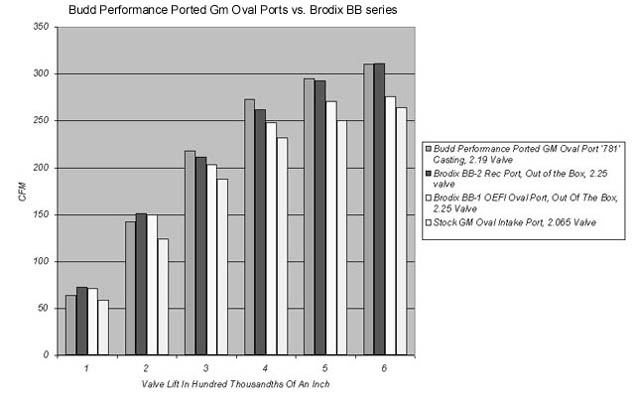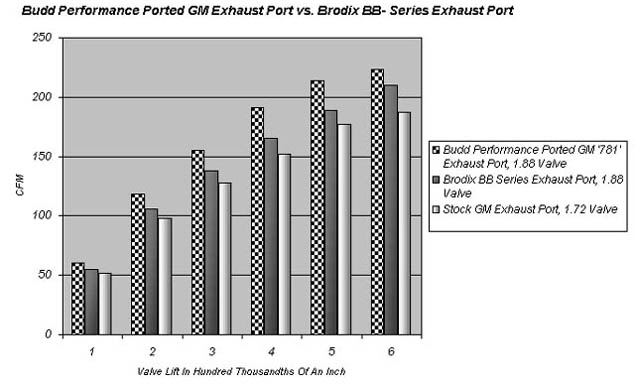| This is a subject that is debated
almost as much as BBC vs. SBC.
Well thanks to Dave Vandenburg, we can do a side by side comparison to
see how they actually compare. This isn't a magazine article that
is skewed by advertisers, just the cold-hard facts. Thanks Dave!
Dave performed the flow tests of both heads on the exact same SuperFlow flow bench. He also performed the port work on the heads. So variables are kept to a minimum. I don't think you'll find a more appropriate "apples-to-apples" comparison. Here is his description of the work done on the heads: The rect ports were, in my opinion, "mildly ported". The intake runners were gasket matched, the valve pockets were smoothed out to the runners, and both short sides were cleaned and smoothed... and of course any casting lines were smoothed. There was probably room for some improvements on them but not without removing a bunch of material. I was already concerned with them being 320cc on the intakes that the motor was going to be lazy so I didn't want to make them any bigger. Besides, the only gain was going to be at .600" lift and above. The low lift flow #'s were low and I knew it would only get worse with volume. The oval port intakes were gasket matched to a Fel-pro intake gasket and was blended back about 2" into the stock cast port. Under the intake valve was blended in the same fashion (out to the stock port) to the full size of the valve right up to the seat. The short side was touched to nock off the high spots. Just the basic bowl blend / gasket match to me. The exhaust was bowl blended to the seat size and down into the stock port as well. I spent some extra time on the short side here. The short side was smoothed and radiused very nicely right up to the seat... and I'm talking less than 1/32nd from the seat and polished as well. I took some material off the top of the exhaust guide and blended out to the roof of the port also but the guide still had an obvious flat spot to it. Both intake and exhaust valves were relieved in the combustion chamber area the same amounts.
The
Results!
As you can see, the numbers speak for themselves. The oval port heads kick butt up until .650" lift, then the rectangular ports take off. The majority of all street/strip or weekend warrior applications are not running over .650" lift cams. Also, you have to take into consideration that the valve is at max lift at only approximately 8% of the time. So, low and mid lift flow numbers are VERY important. That's where the oval port heads really stand out. Technically, there is no winner or loser. It all depends on the application. This is excellent information to prove that oval port heads are the best choice for "milder" applications that are under 500 CI and have a max RPM in the 6500 range. No doubt, the rectangular port heads have their place. They are the choice for ALL-OUT performance. But for less radical combinations, the oval ports are the choice.
More Facts Here is flow bench results from Patrick Budd at Budd Performance. He is the Competition Director for the NSCA and a racer. Patrick emailed this info to me long ago, but I lost it. Luckily Dave had a copy and sent them to me.
Even More Info! Click on Polishing a set of sneakers to see a VERY imformative article. You asked for it, you got it, REAL WORLD RESULTS on the strip! You can discount flow numbers and dyno numbers, but Patrick puts up in this article. Read this story then notice what happens when they bolt on a set of Merlin Rect. port heads at the end of the article.....
|

